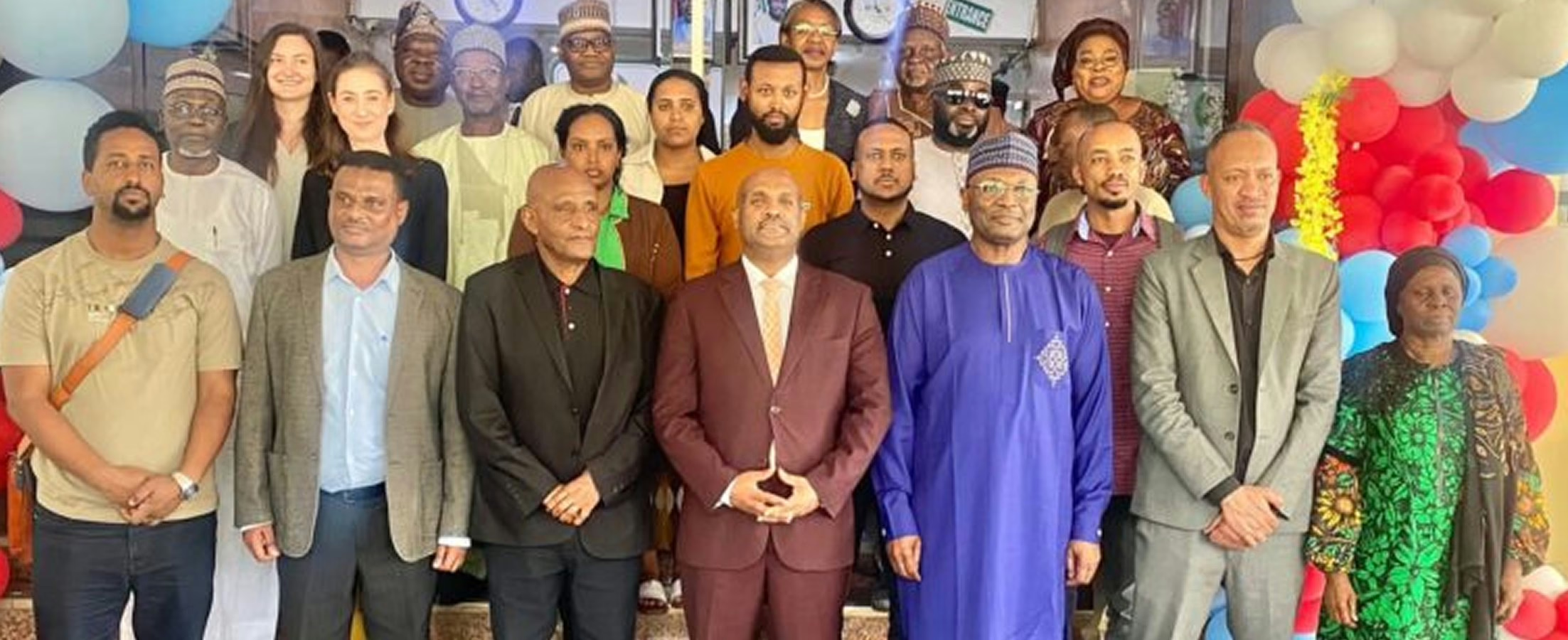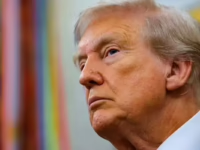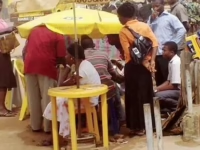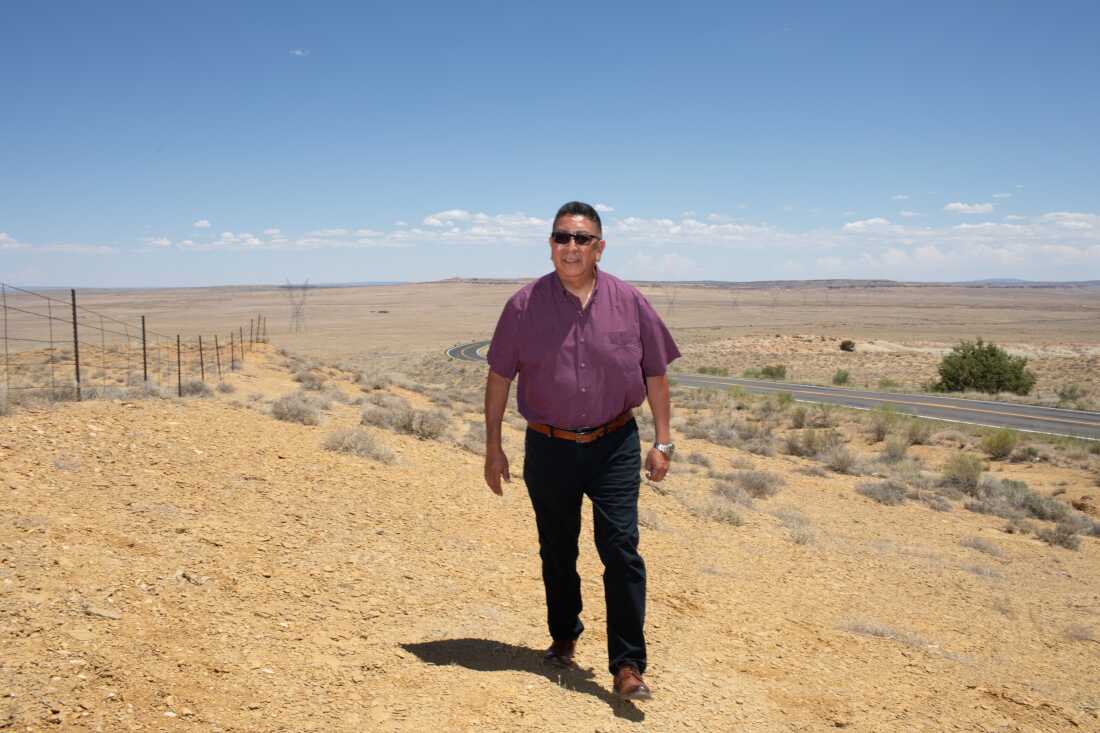
Following President Trump’s enactment of the One Big Beautiful Bill Act in July, tax incentives for large-scale renewable energy initiatives will cease for projects commencing construction after July 4, 2026, or not operational by December 31, 2027. This policy shift forces Hopi Chairman Tim Nuvangyaoma (pictured) and his community to reconsider financing strategies for expansive renewable energy ventures that could electrify the entire reservation and stimulate economic growth.
Ryan Kellman/NPR
hide caption
toggle caption
Ryan Kellman/NPR
Throughout his 55 years, Hopi Chairman Tim Nuvangyaoma has witnessed high-voltage transmission lines slicing through the Hopi lands in northeastern Arizona, channeling electricity across the Southwest. Yet, the Hopi Reservation itself has never been fully integrated into this power grid.
Instead, the community depends on a solitary power line stretching approximately 30 miles east to west across the arid desert, dotted with three prominent mesas that host 12 distinct villages, some among the oldest continuously inhabited settlements in the nation.
Nearly 3,000 residents living more than a mile from this line remain without electricity, relying on generators to power essentials such as refrigerators and medical equipment.
For those connected, power supply is erratic, with outages sometimes lasting several days.
“Any power surge or outage can disrupt equipment that people’s lives depend on,” Nuvangyaoma explains.
The tribe had anticipated a turning point in their energy challenges.
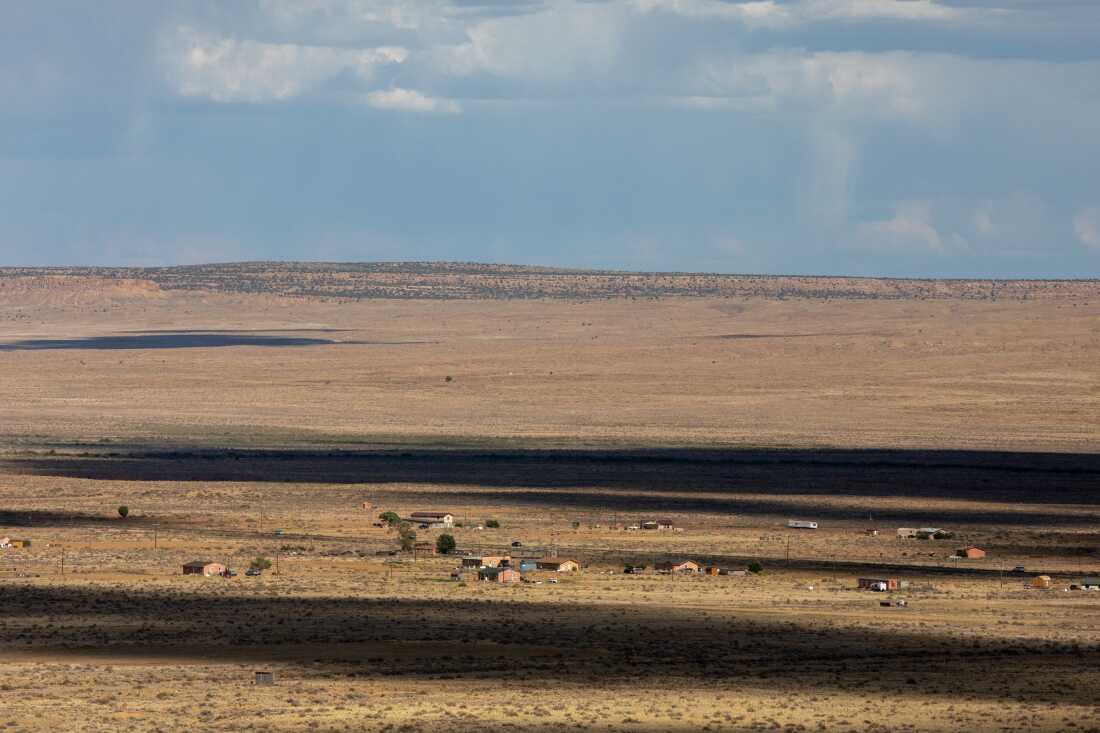
The Hopi Reservation covers over 1.5 million acres, with its 12 villages spread across three mesas in northeast Arizona. Homes nestled in valleys are surrounded by native vegetation such as four-wing saltbush and juniper trees, characteristic of the high desert environment.
Ryan Kellman/NPR
hide caption
toggle caption
Ryan Kellman/NPR
During President Biden’s administration, the 2022 Inflation Reduction Act allocated nearly $2 billion to support tribal renewable energy projects.
The Hopi Tribe secured a $25 million grant aimed at installing solar panels and battery storage for approximately 600 homes through the Solar for All initiative.
However, in August, the Trump administration abruptly ended the Solar for All program, labeling it inefficient.
Consequently, the tribe now faces the grim reality of powering only about 100 homes with limited funds from the Tribal Electrification Program, forcing difficult decisions about who will receive electricity.
“Delivering this news is heartbreaking,” Nuvangyaoma shares. “When you give people hope and then it’s taken away, it’s devastating.”
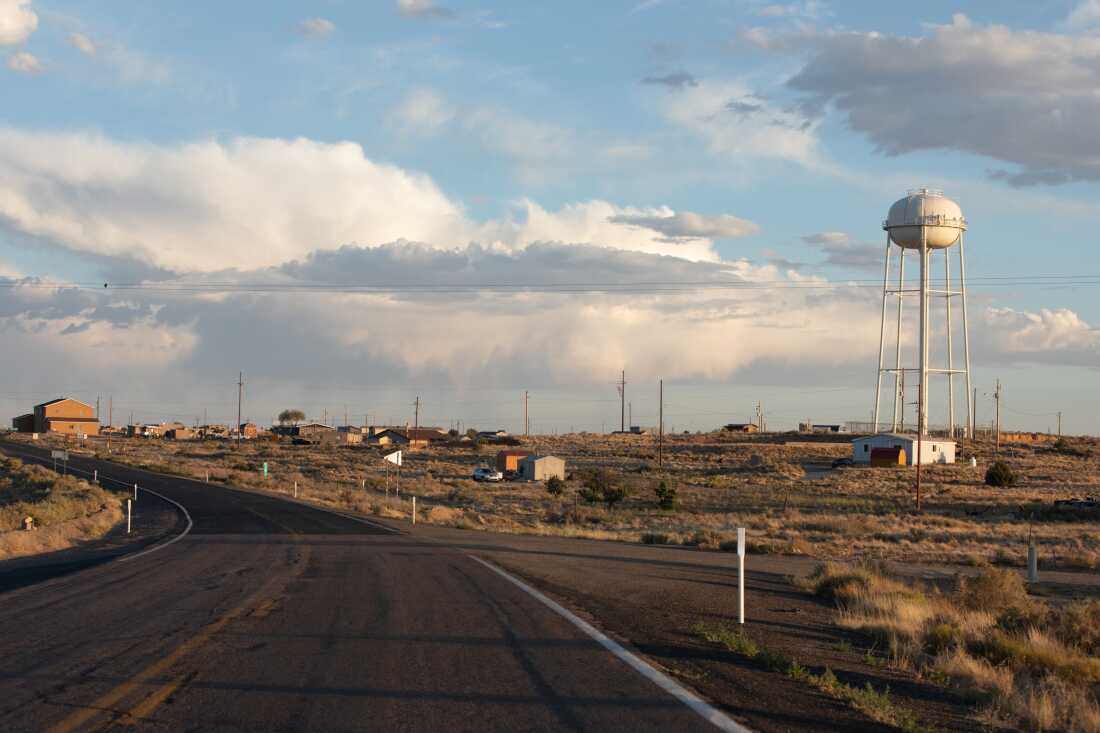
“Renewable energy aims to reduce the factors driving climate change,” Nuvangyaoma states as the late-afternoon sun illuminates Shongopovi village.
Ryan Kellman/NPR
hide caption
toggle caption
Ryan Kellman/NPR
Transformative Potential for Tribal Communities
The Hopi Reservation’s energy challenges are emblematic of a broader issue affecting Native American communities nationwide. According to a 2023 report by the Department of Energy’s Office of Indian Energy Policy and Programs, approximately 54,000 tribal members lack access to electricity.
Even those connected to the grid experience power interruptions far more frequently than the general population, notes Wahleah Johns, former director of the office during the Biden administration.
“Tribal households endure power outages at a rate 6.5 times higher than the national average,” Johns reveals.
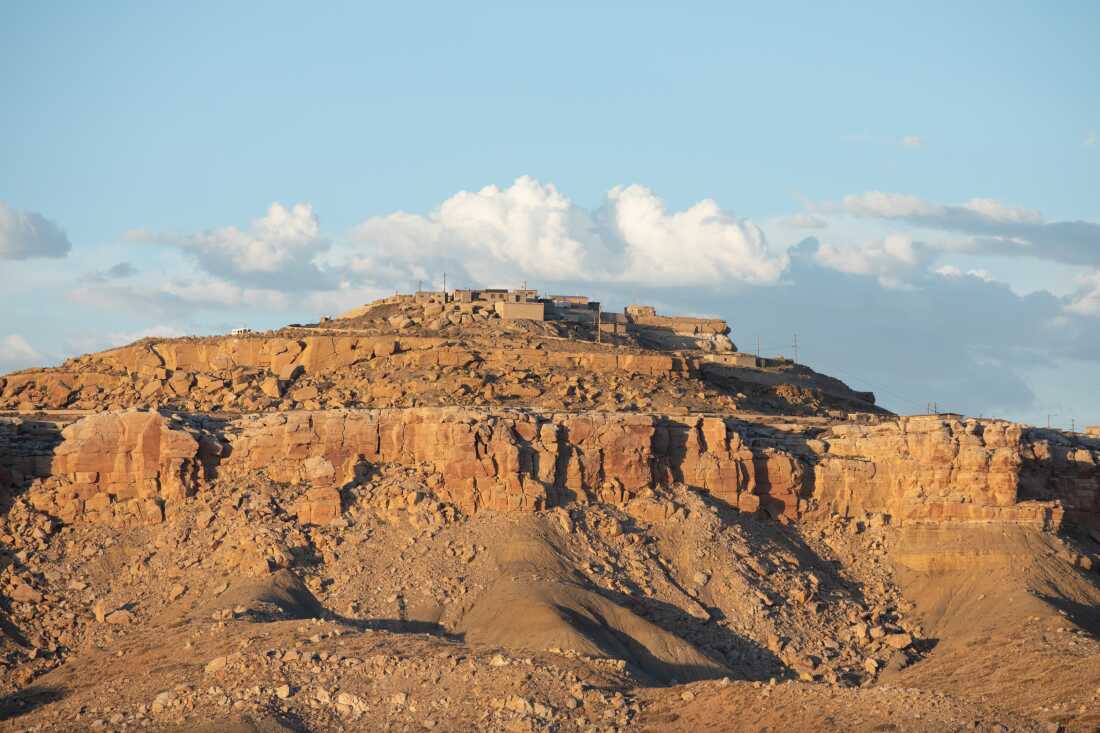
On August 7, the Environmental Protection Agency sent termination notices to all recipients of Solar for All grants, including the Hopi Tribe, which had been awarded $25 million to connect roughly 600 homes to solar power and battery storage. Here, a Hopi village is perched atop a mesa.
Ryan Kellman/NPR
hide caption
toggle caption
Ryan Kellman/NPR
This energy inequity traces back to the 1920s and 1930s, when utility companies systematically excluded tribal lands during the expansion of transmission infrastructure across the Western United States, Johns explains.
“As transmission lines were constructed, tribes and their lands were often bypassed,” she says.
The Inflation Reduction Act was hailed as a breakthrough for tribal energy sovereignty, Johns adds. It enabled tribes to access tax credits for renewable energy projects and provided billions in loan guarantees, including for the Hopi.
Programs like Solar for All and Climate Pollution Reduction Grants were designed to accelerate clean energy adoption in tribal communities, which otherwise lack the capital for such investments.
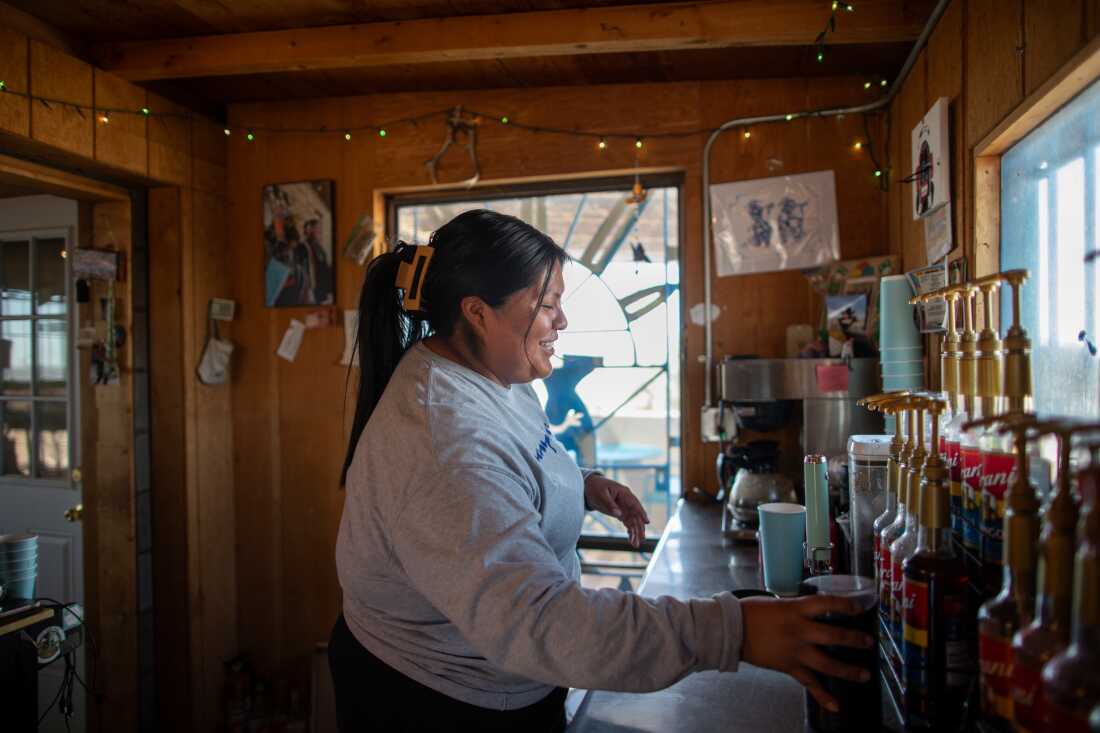
Storm Tso crafts a beverage at Hopi Grounds, a local business situated along Route 264, the main artery connecting the reservation’s three mesas.
Ryan Kellman/NPR
hide caption
toggle caption
Ryan Kellman/NPR
“Building transmission lines costs upwards of $40,000 per mile,” Johns notes. “Given the low median incomes on tribal lands, such investments are often unattainable.”
According to the U.S. Census Bureau, the median annual income for non-Hispanic white households is $81,604, compared to $54,485 for non-Hispanic American Indian and Alaska Native households.
Yet, the recent passage of the One Big Beautiful Bill Act by Congress has reversed much of the IRA’s funding, eliminating tax credits for large-scale renewable projects that start construction after July 4, 2026, or fail to become operational by December 31, 2027.
Fletcher Wilkinson, energy manager at Hopi Utilities Corporation, emphasizes the difficulty this creates for tribal and rural communities, which lack access to capital and struggle to attract utility investments.
“This legislation hampers the Hopi Tribe and other remote communities by making energy project development more challenging,” Wilkinson asserts.

With the cancellation of Solar for All, the Hopi Tribe can only provide electricity to about 100 homes. Vice Chairman Craig Andrews expresses the difficulty of deciding who should receive power first – whether it be elders or individuals with disabilities. “We shouldn’t have to make these choices,” he says.
Ryan Kellman/NPR
hide caption
toggle caption
Ryan Kellman/NPR
In August, the Environmental Protection Agency announced the termination of the Solar for All program, citing the One Big Beautiful Bill Act as the reason for halting future funding, including previously allocated tribal funds.
EPA Administrator Lee Zeldin declared in a video posted on the agency’s YouTube channel, “EPA no longer has the authority to manage this program or the appropriated funds to sustain it.”
However, tribal energy attorney Pilar Thomas from Quarles & Brady disputes this claim.
“All grant funds were fully obligated,” Thomas explains. “Congress cannot retract funds that have already been committed.”
The EPA did not respond directly to NPR’s inquiries but stated via email that it is implementing the One Big Beautiful Bill Act in line with congressional directives and remains committed to supporting projects that protect human health and the environment.
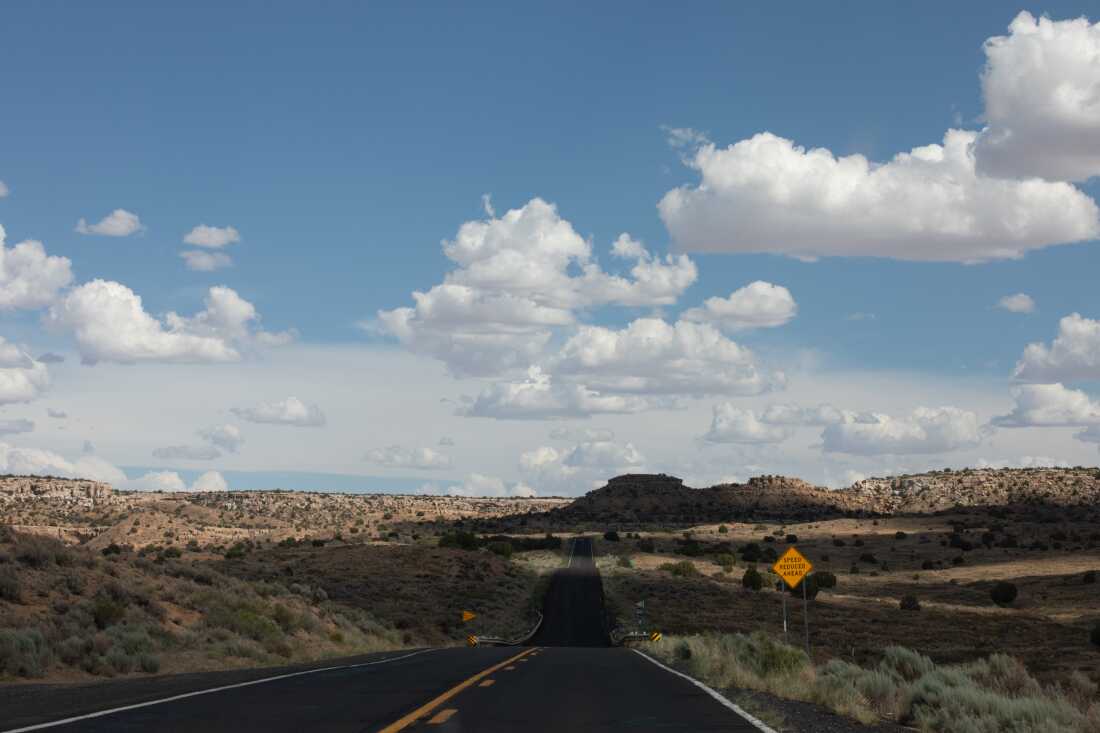
The 2023 Department of Energy report highlights that 54,000 tribal members lack electricity access, a disparity rooted in early 20th-century infrastructure development that excluded tribal lands, according to Wahleah Johns.
Ryan Kellman/NPR
hide caption
toggle caption
Ryan Kellman/NPR
“An Ambitious Vision”
The funding cuts embedded in the One Big Beautiful Bill Act represent a significant setback for tribes like the Hopi.
Historically, the Hopi depended on the Navajo Generating Station, a coal-fired plant on Navajo Nation land, for employment and revenue. Its closure in 2019 resulted in the loss of about 85% of the tribe’s income.
Unemployment on the reservation remains high at roughly 12%, nearly triple the national average.
When asked about the cancellation of Solar for All, White House spokesperson Taylor Rogers stated via email that the administration is focused on lowering energy costs and ensuring stability.
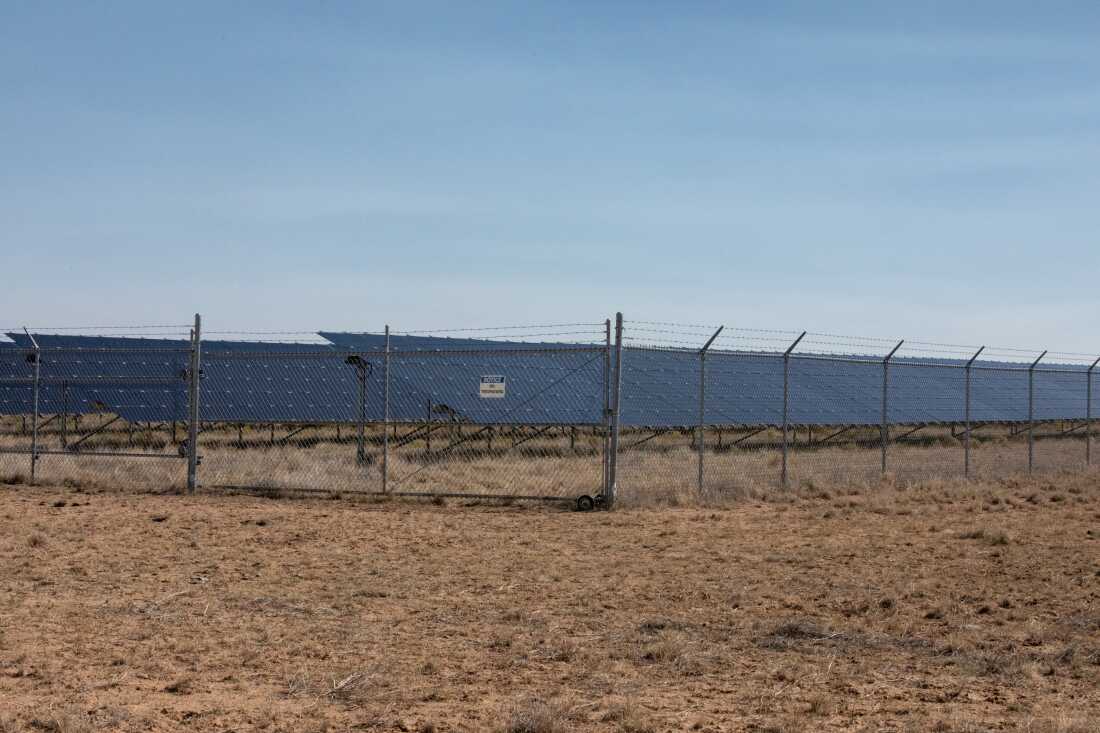
The Hopi Arsenic Mitigation Project, powered by solar energy and battery storage, addresses decades-long water contamination issues by treating arsenic-laden water, funded by multiple federal agencies and the tribe.
Ryan Kellman/NPR
hide caption
toggle caption
Ryan Kellman/NPR
“The left pushed a radical climate agenda that shuttered clean coal plants and forced reliance on unstable green energy,” the spokesperson wrote.
Beyond solar panel installations and battery storage, the Hopi had planned to leverage IRA tax credits to develop an 8-megawatt microgrid capable of powering the entire reservation, creating jobs and economic opportunities.
Nuvangyaoma also envisions a large-scale 400-megawatt solar project with battery storage that could position the Hopi as a key energy provider in northeast Arizona.
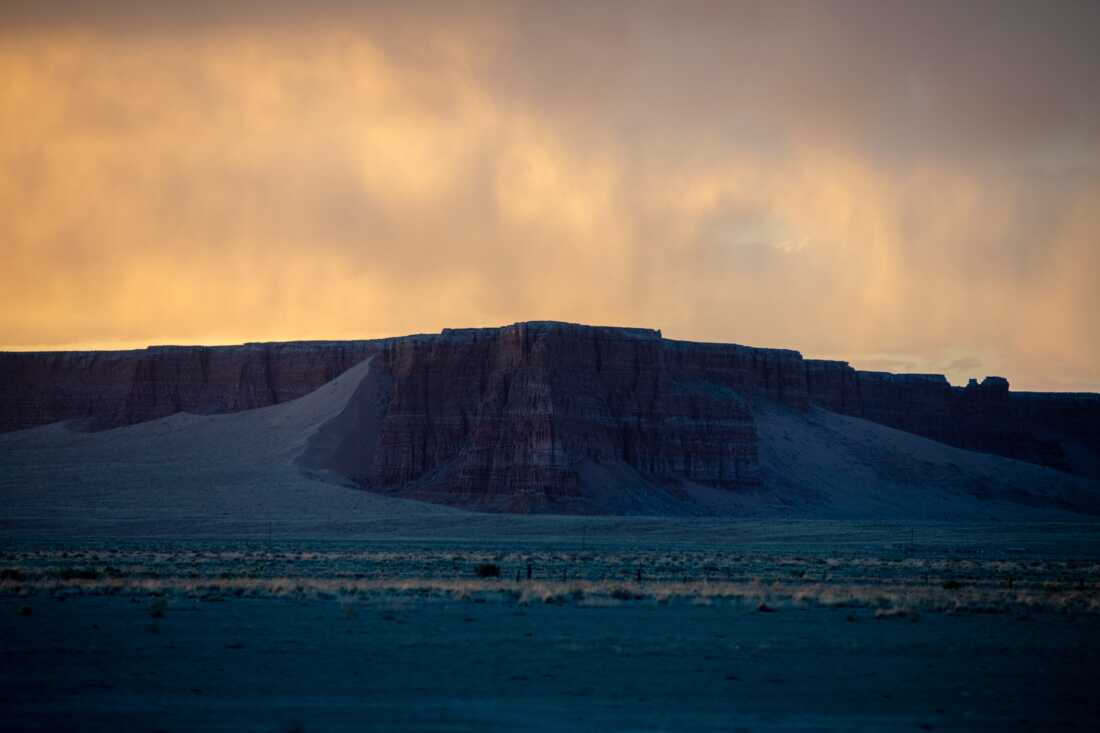
As the sun sets over the Hopi Reservation’s three mesas, Wahleah Johns reflects on how the recent legislation undermines tribal autonomy by restricting access to wind, solar, and battery storage development.
Ryan Kellman/NPR
hide caption
toggle caption
Ryan Kellman/NPR
The Hopi had anticipated that tax credits would cover over half the cost of this ambitious project, which is substantial, according to Thomas.
“No one is going to hand out a $900 million check, and banks won’t finance it without those credits,” she explains. “Tax credits have historically been essential for project financing.”
With the new restrictions, developing large-scale utility renewable projects becomes even more daunting due to their high costs and extended timelines.
Thomas, who is also a member of Arizona’s Pascua Yaqui Tribe, warns that the One Big Beautiful Bill Act threatens not just the Hopi’s plans but all similar projects nationwide.
Johns notes that many tribes remain uncertain about which funding streams remain accessible.
“Cutting these clean energy programs within the IRA is not only poor policy,” Johns asserts, “it breaches the federal government’s trust and obligations to tribes.”
The Hopi and other tribes intend to challenge the Trump administration legally to restore the Solar for All funds, totaling approximately $7 billion allocated to 49 organizations, six tribes, and five states.
“We have an incredible plan,” Nuvangyaoma affirms. “I refuse to let it gather dust.”
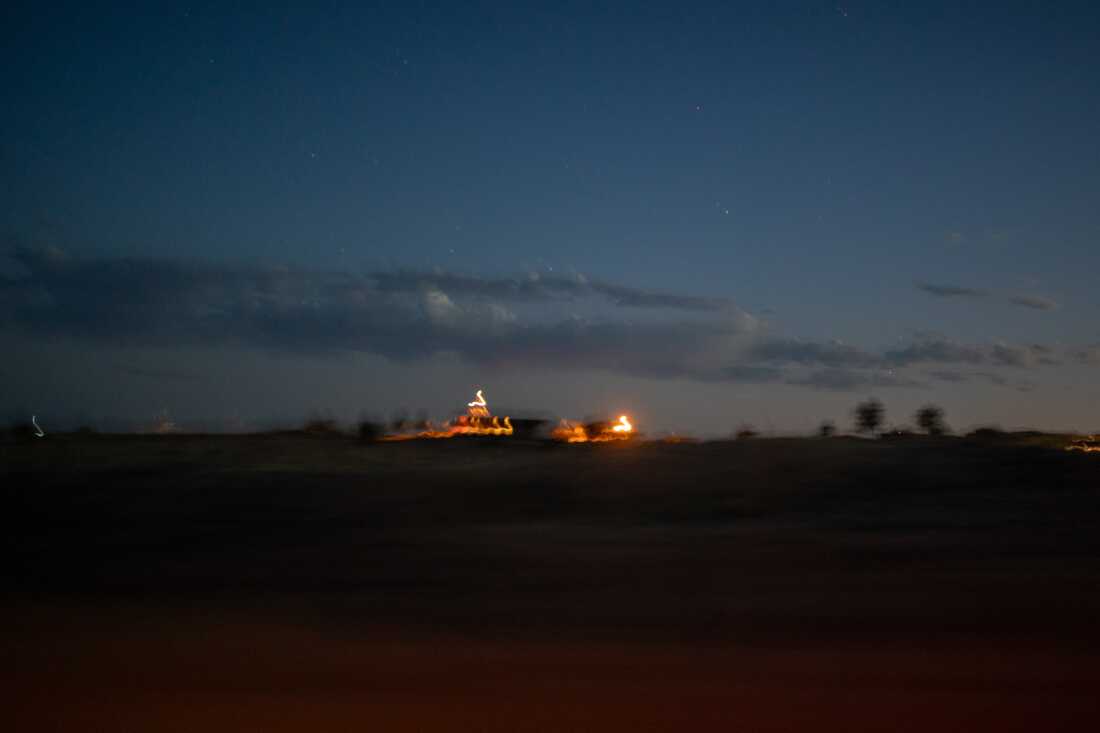
Nearly 900 homes, housing close to 3,000 tribal members, remain without electricity on the Hopi Reservation. Those with power face instability, as any disruption along the 30-mile power line can cause outages lasting days.
Ryan Kellman/NPR
hide caption
toggle caption
Ryan Kellman/NPR



